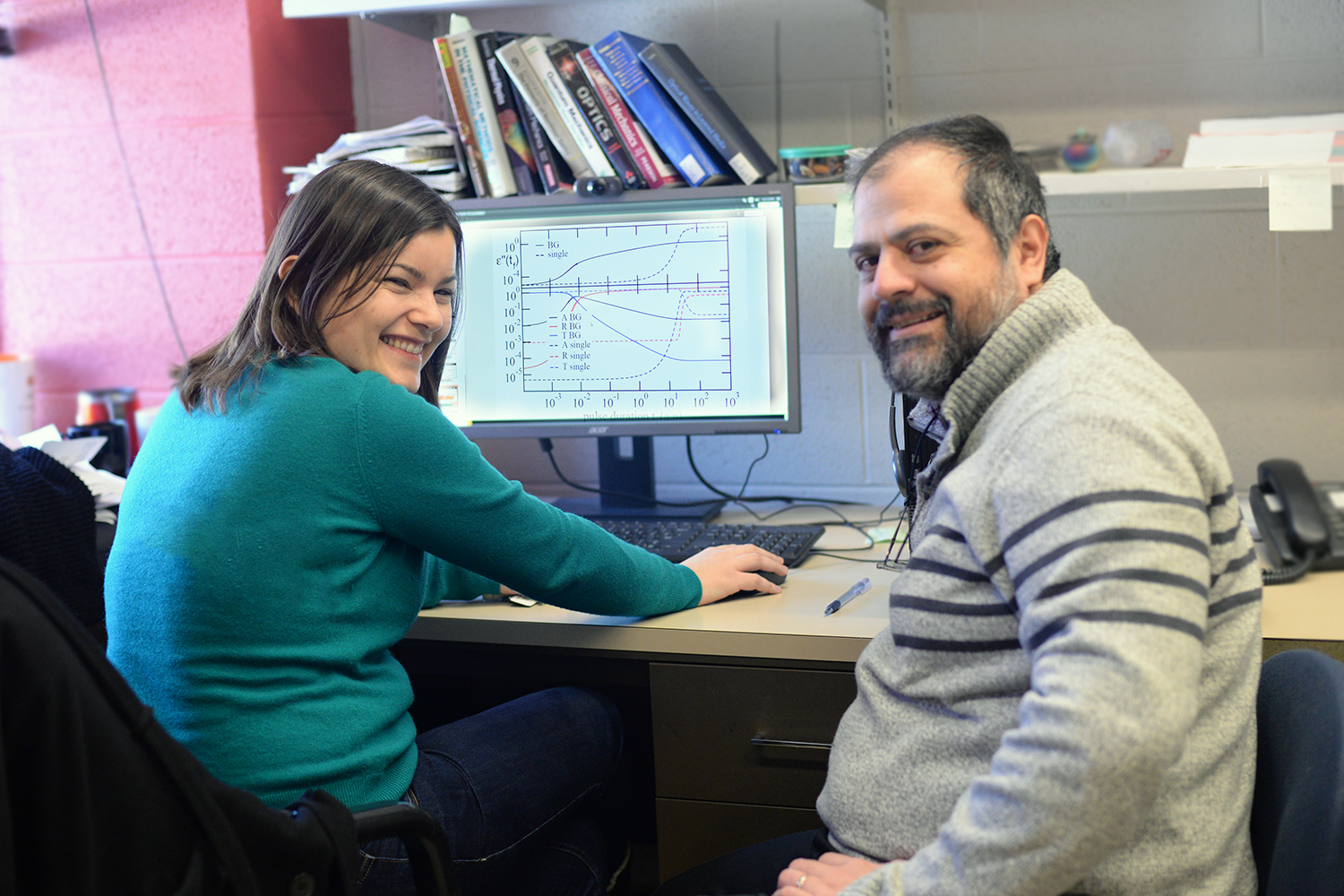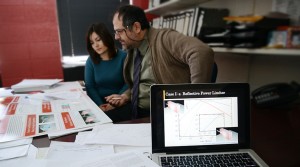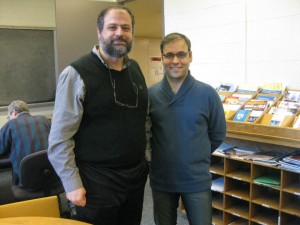Wesleyan Physics Lab, U.S. Air Force Partner on Groundbreaking Research
![physics[1]](https://newsletter.blogs.wesleyan.edu/files/2015/02/physics1-760x301.jpg)


For many years, pilots in the Air Force, scientists conducting research with high-powered lasers, and others have struggled to protect their eyes and sensitive equipment from being damaged by intense laser pulses. In many cases, this was achieved by intense power filters, which offered protection, but self-destructed. Now they have a solution, which provides protection without damaging the filters themselves, thanks to a research collaboration between the Air Force Research Laboratory (AFRL) and a team of researchers in Wesleyan’s Physics Department.
The research, led by Tsampikos Kottos, the Douglas J. and Midge Bowen Bennet Associate Professor of Physics, is included in the just-released U.S. Air Force Office of Scientific Research 2014 Technical Strategic Plan. The document is published on the Air Force Research Laboratory (AFRL) webpage.
Previous attempts at a solution focused on creating gradually darkening sunglasses to protect the wearer’s eyes when s/he steps into bright sunlight, but return quickly to their normal state when indoors. However, no version could darken quickly enough to protect the wearer from short laser pulses.
As described in the Technical Strategic Plan, Kottos and the Air Force researchers “conceptualized the Reflective Optical Limiter to address this threat via a periodic layered structure with an embedded nonlinear layer within the lens. Such a layered structure acts as a self-protecting power limiter. At low intensity of the incident light, the entire stack is highly transmissive, but when the input power exceeds a certain level, the stack becomes highly reflective over a broad frequency range, regardless of the angle of incidence. The excessive radiation is reflected back to space, rather than being absorbed by the limiter. This prevents overheating and destruction of the limiter.”

Kottos worked with Eleana Makri, a graduate student doing a Ph.D. thesis on Reflective Optical Limiters, and Hamidreza Ramezani, who earned a Ph.D. in physics from Wesleyan in 2014. His thesis was on non-Hermitian Optics. Funding for the project came from the Air Force Office of Scientific Research (AFOSR).
“The inclusion of our research activity in the Technical Strategic Plan document of the Air Force Office of Scientific Research is now establishing this research line as a strategic research priority of the Air Force. This means that pretty soon, other research groups will start following our approach. I believe that in the next couple of years we will have exciting developments in this area,” Kottos said. “I am looking forward to them and am hopeful that my group will continue to be at the forefront of this research line.”
Kottos became involved in the research a couple years ago when he was made aware of this problem while visiting AFRL for a scientific meeting.
“For a theoretical physicist like myself, industrial projects were not very exciting—this is what I used to believe!” he said. “Now I see a beauty in these types of problems. In fact, many of them can be very intellectually challenging, and can even lead to new scientific developments.”
The research in this area is ongoing, Kottos said, and falls into two main fronts. The first is material research, which aims to develop and identify new materials that can be used as limiters.
“Obviously, these materials have their own limitation as far as incident power is concerned. Above some incident laser power they are destroyed,” he explained. “So, one problem that our study addresses is the improvement of the efficiency of limiters which are based on these materials by developing novel geometric structures.”
The other front is structure research.
“Here the idea is to propose new geometries/structures which use existing materials in order to create efficient power limiters. Along these lines, a typical proposal is what people call a sacrificial limiter. These limiters consists of a simple layer material, which allow low power incident light to pass through them (that is, they are transparent for low level radiation) but if the incident light intensity is high, then they are heated up and destroyed,” he said. “In this respect they protect the sensor which is standing behind these limiters but at the cost that they are destroyed – thus the name ‘sacrificial limiters.’ This means that we have to replace them—which means time and money. In short, in this approach an optical limiter acts like an ‘optical fuse.’”
According to Kottos, “We found out that if the same protective layer is incorporated into a certain photonic layered structure, the entire multilayer can become highly reflective for high-level radiation, while remaining transmissive at certain frequencies if the radiation level is low. Such a reflective limiter can be immune to overheating and destruction by high-level laser radiation, which was our main objective.”
Though the Air Force is primarily interested in using this technology to protect pilot’s eyes, it has a more general use in protecting sensors like antennas and other sensitive elements of photonic circuitry, Kottos explained. It is also useful for scientific personnel doing research with high-powered lasers.
The research is still in its early stages, and Kottos, Makri and their colleague at the AFRL are continuing work to improve the original concept. They’re also in touch with experimentalists at other universities to help with realizing such a structure.
Read more about the Physics Department’s power limiter research in this past News @ Wesleyan article. Download the Air Force Office of Scientific Research’s Technical Strategic Plan here (Wesleyan is mentioned on page 8).

